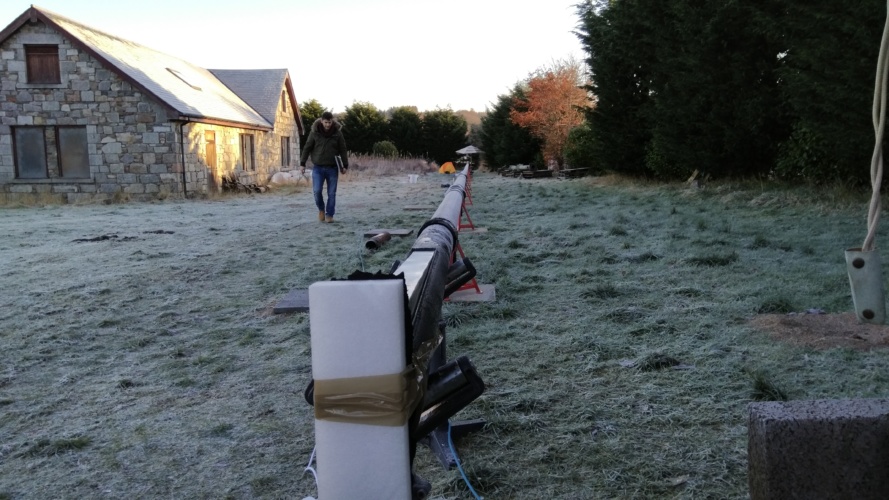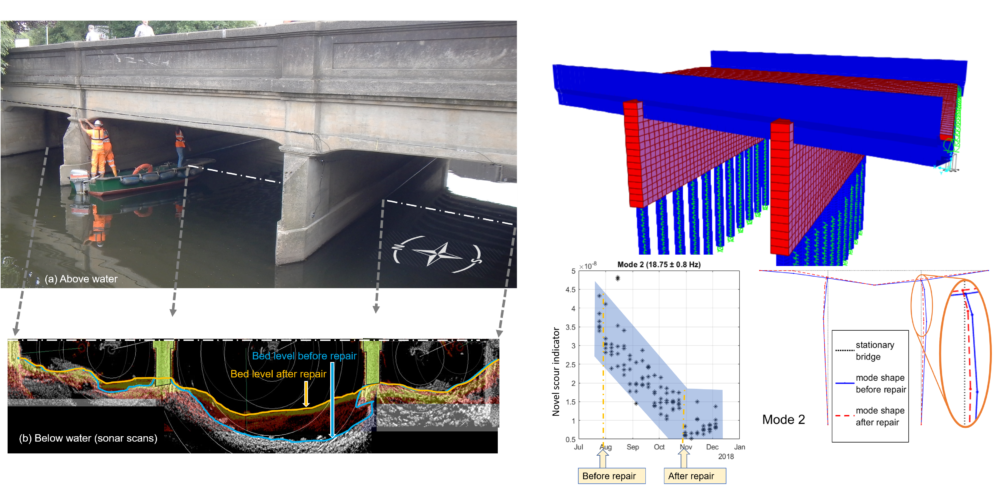C2I 2020
Category: Information, Data & Connectivity
Project: Radio Frequency Pipeline Communications - Electromagnetic Research
Partners: Innerpath Technologies Ltd, University of Edinburgh, Heriot Watt University, Oil and Gas Innovation Centre (OGIC)
Innerpath’s Martin Beveridge is well versed in the limitations of current data acquisition methods and the high costs of monitoring deep well bores and pipelines in the oil and gas sector.

Monitoring subsea infrastructure and obtaining data from subsurface wells has been reliant on cabled transmission or fibre optic-based systems, and for wireless methods only low data rate acoustic frequency techniques have been possible. Digitalised and Industrial Internet of Things (IoT) solutions for subsurface applications is an obvious solution, but developments in this area have been stymied by the high capital cost of installing subsea infrastructure.
For this project, the team assessed the use of pipeline structures as radio frequency (RF) waveguides to enable internal propagation of a modulated carrier signal to transmit information from local sensors. In use, this solution could be used to determine pressure temperature and fluid characteristics and other performance-related information in remote sub-surface pipelines or wells. The follow-up stages of this project aim to develop the first commercial RF wireless modem products for pipelines and wells.
The project was in response to a call in 2018 by the Scottish Enterprise Grey Matters programme that sought entrepreneurs and innovators to collaborate and use their expertise in the oil and gas sector to develop new high growth companies.
C2I 2020
Category: Information, Data & Connectivity
Project: Novel vibration-based scour monitoring technique
Partners: Cambridge Univesity (Laing O’Rourke Centre, Centre for Smart Infrastructure and Construction, and Scofield Centre), Bradford Metropolitan Council, Gaist Solutions, TMS Maritime Ltd.
A centrifuge test programme led by Cambridge University has revealed how sensitive bridges are to scour, which is the most common cause of bridge failure worldwide.
In the UK alone, scour damage of railway bridges alone accounts for up to £60m in lost revenue and eight million in lost passenger miles annually. Scour occurs as a result of fast water flow, especially during flooding, which undermines the soil supporting the bridge foundations.

Currently, the primary technique for scour monitoring in the UK is a costly and potentially dangerous diving inspection. With the aim of demonstrating smart scour monitoring solutions, the Laing O’Rourke Centre and Centre for Smart Infrastructure and Construction at Cambridge University carried out one of the first major scour monitoring deployments and a series of geotechnical centrifuge tests with the project partners.
The key impact of this project is the development of a novel vibration-based monitoring technique that provides a low-cost, robust, real-time monitoring solution that doesn’t require underwater sensors.
Such a technique could potentially guide timely repair and avoid future bridge failures from occurring. This project demonstrated the field viability of this monitoring technique, developed a detailed methodology to deploy the monitoring technique in practice and established the sensitivities of three vibration-based parameters involved.
C2I 2020
Category: Information, Data & Connectivity
Project: Improving the data quality of low-cost air pollution sensors
Partners: South Coast Science, Ricardo
A person’s health can deteriorate in areas where air quality is poor and limits have been set by national and local authorities to alleviate the situation.
The market for air quality monitors demands a product that is low-powered, low-cost and whose performance is complementary to that of a government AURN (Automatic Urban and Rural Network) installation. These reference sites around the UK form the network for compliance reporting against the Ambient Air Quality Directives.
For sensor systems, there are two technical specification documents in preparation within the European Standardisation community (CEN), one for gases and one for particulate matter (PM). Currently, the only way to demonstrate any particular level of uncertainty is via a demonstration of equivalence, which is both expensive and time-consuming, especially for gas sensors.
The task undertaken by SCS was to provide a solution for measuring PM and gases that meet these requirements and the future technical specifications. This has now been achieved and is founded on two pillars: Firstly, the electrochemical sensor used in the device responds lineally in controlled conditions. Secondly, although complex interactions occur within the environment (temperature, humidity, movement of air) the sensor always responds in the same way and offers excellent repeatability.
Furthermore, making the measuring equipment low-cost and portable, means high spatial and temporal data is now available which opens up potentially significant possibilities for air quality monitoring.
CLICK HERE FOR MORE C2I 2020 COVERAGE
About the category sponsor
Babcock International Group
Babcock is a leading provider of critical, complex engineering services which support national defence, save lives and protect communities. The company focuses on three highly regulated markets – defence, emergency services and civil nuclear – delivering vital services and managing complex assets in the UK and internationally.










Radio wave weapon knocks out drone swarms
I hope they have assessed how easy it is to shield a drone against the attack. Hopefully the shielding would add too much weight.